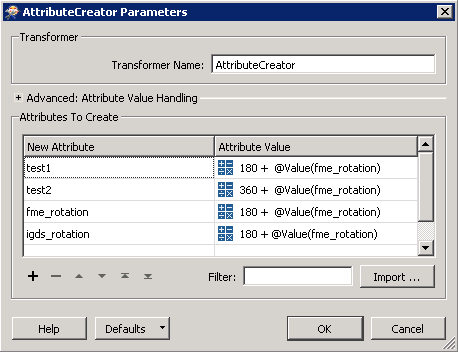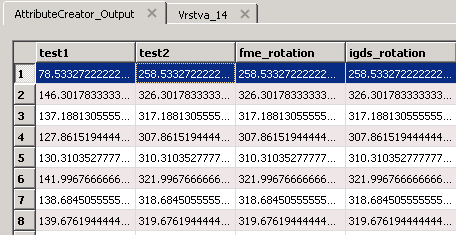Hello everyone.
I am storing dgn v8 files into postgis database and I am getting confused by igds_rotation attribute.
I know what it represents, however the value itself is the part I do not understand. Browsing through documentation I get that
"The rotation is measured in degrees counterclockwise up from horizontal"
and
"Range: -360.0..360.0"
Which basically means (correct me if I am wrong) that counterclockwise rotation is [0,360] and clockwise rotation is [0, -360].
I need rotation to always be > 0, therefore I need to normalise the value.
Now, I want to convert for example -60° to 300°, which is basically adding 360 to negative angle value.

When I inspect the features, I see that the correct rotation behavior is when I add 180 to fme_rotation, not 360 which is not what I would expect.

Can someone please explain why FME behaves this way (FME 2017.0). or am I just missing something?
Thanks in advance,
Radek



